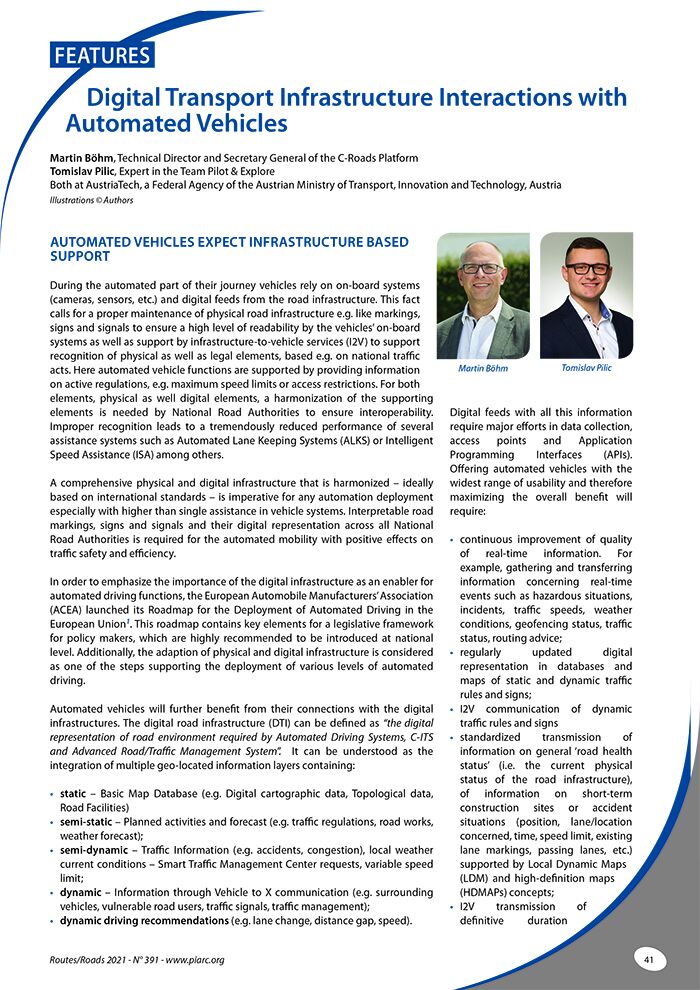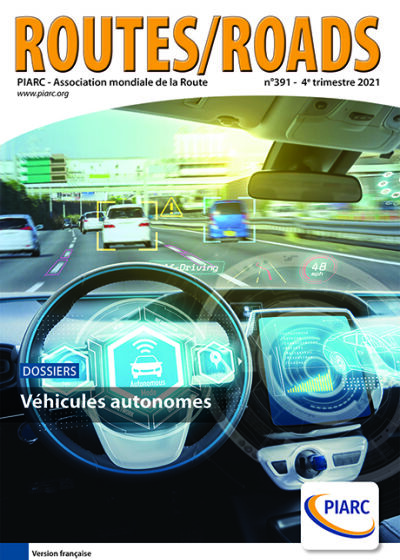Digital Transport Infrastructure Interactions with Automated Vehicles

During the automated part of their journey vehicles rely on on-board systems (cameras, sensors, etc.) and digital feeds from the road infrastructure. This fact calls for a proper maintenance of physical road infrastructure e.g. like markings, signs and signals to ensure a high level of readability by the vehicles’ on-board systems as well as support by infrastructure-to-vehicle services (I2V) to support recognition of physical as well as legal elements, based e.g. on national traffic acts. Here automated vehicle functions are supported by providing information on active regulations, e.g. maximum speed limits or access restrictions. For both elements, physical as well digital elements, a harmonization of the supporting elements is needed by National Road Authorities to ensure interoperability. Improper recognition leads to a tremendously reduced performance of several assistance systems such as Automated Lane Keeping Systems (ALKS) or Intelligent Speed Assistance (ISA) among others.
-
Information sheet
- Date: 2021
- Author(s): BÖHM Martin / PILIC Tomislav
- Domain(s): Road Network Operations
- Type: RR391 - FEATURES
- PIARC Ref.: RR391-040
- Number of pages: 4
-
This article has been published in the Routes/Roads magazine
